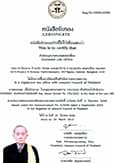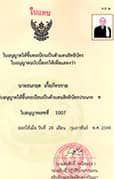Copyright
Copytights
Copyrights mean exclusive right to undertake any activity that is related to works that an innovator has created. A copyright is a work that resulted from intellectuality, knowledge, and assiduousness to innovate the work. It is considered a type of intellectual property that has economic value. Therefore, an owner of a copyright should be protected under the law.
Rights under copyrights will be acquired immediately after an innovator developed the work without registration requirement. The owner of copyright should therefore protect the work by bringing together relevant evidence that may be used to prove the ownership of the work in the future.
Innovative works that are considered copyright comprise of different types of works as follow:
- Literary work, such as book, periodicals, article, publication, and computer program.
- Choreographic work, such as cultural dance, dancing, posture or a performance that is composed in to a story, as well as pantomime.
- Artistic work, such as painting, sculpture, graphic arts, architecture, photography, plan chart picture, applied art including photograph and diagram of the work.
- Musical work, such as melody and lyrics or only melody including a well composed tones and chorus.
- Audiovisual, such as video tape and laser disc.
- Cinematography, such as movie and supporting sound of the movie. (if available)
- Sound recording, such as cassette tape and compact disc.
- Sound and picture broadcast, such as radio broadcast, or sound and picture broadcast via a television station.
- Other works that are related to the literary, scientific, and art domains.

 Stay at Thailand homepage
Stay at Thailand homepage Go to English language homepage
Go to English language homepage







